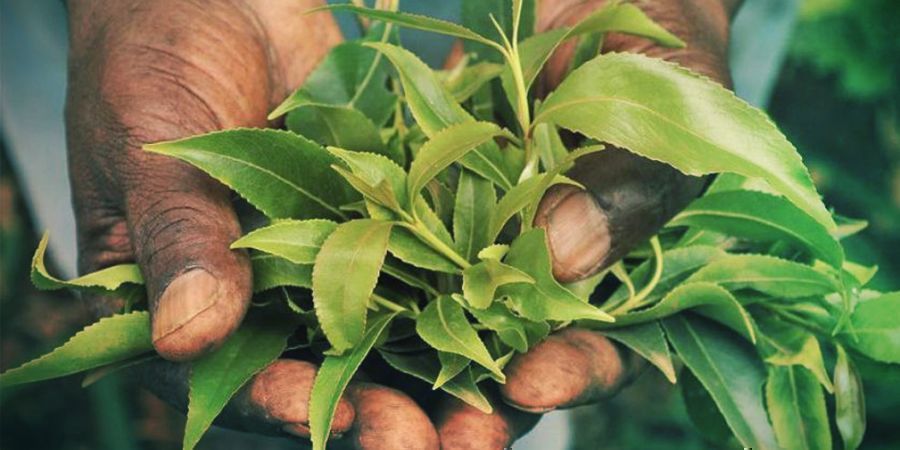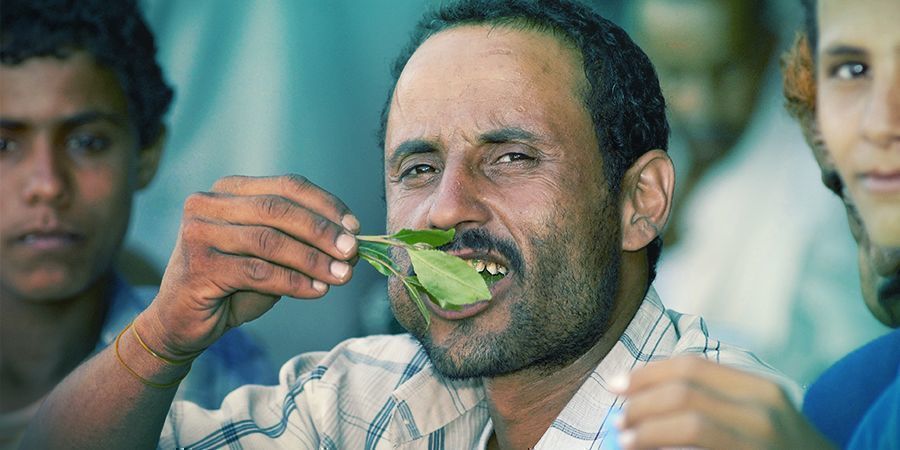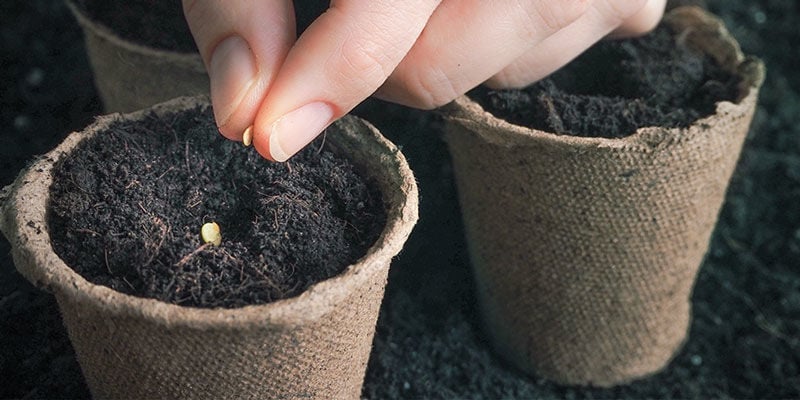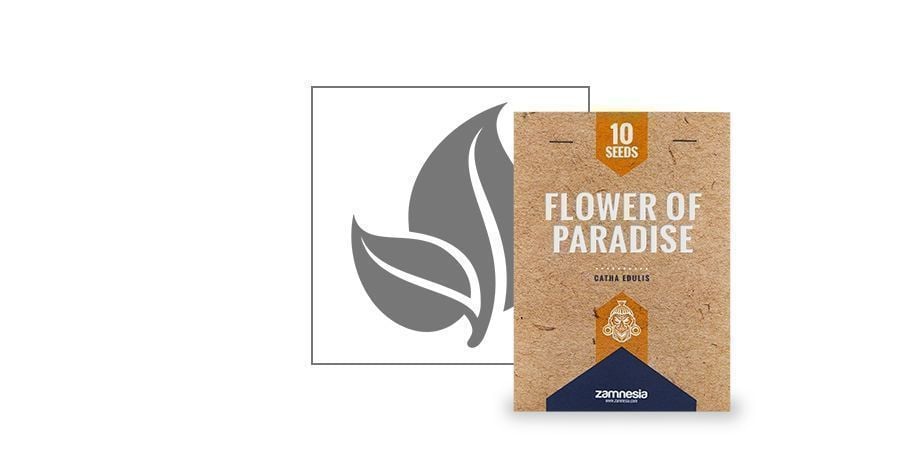What Is Khat?
Khat is a psychoactive plant chewed daily throughout much of the Islamic world. Explore how khat became as popular as it is today, and the effects it offers when consumed.
It is also known around the world as the source of cocaine. But there is a lesser-known plant from Africa that has had a similar global reach. Khat (Catha edulis) is native to East Africa and southern parts of the Arabian peninsula.
The fresh leaves of khat contain psychoactive alkaloids cathinone and cathine. The former is said to be a “natural amphetamine”, with effects similar to that of methamphetamine or even cocaine. That being said, the effect is far milder, but still stimulating enough to be popular around the Horn of Africa.
WHAT DOES KHAT DO?
The euphoric stimulation that khat provides tends to sharpen the mind by increasing alertness and boosting concentration. It can also make people more excitable. For example, some may talk more rapidly and enthusiastically than normal. This is because stimulation of the brain places users in a more imaginative, creative mindset. The mind starts connecting concepts with greater clarity and flow. There is even a sense of increased confidence and friendliness among many users.
It may be helpful with self-esteem, but the boost of energy it provides comes with some negative side effects. Extended use could potentially lead to long-term health problems. It's not just the hyperactivity and restlessness that could affect energy levels and sleep cycles; it increases heart rate and blood pressure—so individuals with associated conditions should bear that in mind. In the long-term, excessive use of khat may even lead to gastric disorders, liver damage, and permanent discolouration or staining of the teeth and gums.
All that being said, by definition, anything taken in excess is bad for you. Khat forms a part of daily life for many around the Horn of Africa. Its physical risks and likelihood of dependency are far lower than other widely forbidden substances - even lower than the relatively safe cannabis plant. If one is to make an informed decision about ingesting the khat plant, one may as well learn about those who use it regularly.
KHAT USAGE IN NATIVE COUNTRIES

Khat depends on a tropical or subtropical climate to grow. Its ideal climate is found across countries with mostly Muslim populations. These include the African nations of Somalia, Sudan, Djibouti, and Eritrea, as well as parts of Ethiopia and Kenya. It is also widespread in Yemen, a country across the narrow strait of the Red Sea, in the south of the Arabian peninsula. Yemen has many cultural similarities with its nearby neighbours on the African coast. The prominence of khat is certainly one of them.
In many predominantly Islamic countries, alcohol is either banned outright or highly frowned upon. The stimulating effects of khat are used as a substitute for getting drunk. Like anywhere else on the globe, the people of these countries want places to hang out together. They also share the universal desire of wanting to take the edge off. Islamic cultural standards, whether legally enforced or not, push the use of intoxicants underground. It is considered "haram", or religiously forbidden, to take an intoxicating substance that alters the mind.
Khat leaves are preferably consumed when they are young - no more than 4 weeks of age - as the psychoactive substances start to diminish after that. This younger khat is called Urata. Hadar, which is the more matured khat, is milder in term of its effects, but is said to have a more characteristic taste, appreciated by khat connoisseurs. The effects of khat may be mildly stimulating, but not too extreme as to be unacceptable. That is how the plant came to be used so widely in these countries. The emigrants from these nations went on to spread its use throughout the world.
HOW TO TAKE KHAT

In its native countries, the most popular form of consumption is to chew khat leaves in a similar fashion to chewing tobacco - sometimes for hours. More and more leaves are added until they form a big ball that rests against the walls of your cheeks. This allows for the absorption of its psychoactive components, lasting anywhere between 10 minutes and 6 hours before the plant is finally spat out. During this chewing time, users in countries where the plant is grown and tolerated tend to recline and chat with others. Another popular alternative is to brew dried khat leaves and stems into a tea, sometimes known as "Bushman's tea", or "Arabian tea".
However one takes it, it is important to know how much is too much. As a general guideline, khat is typically consumed in doses of between 100 and 300 grams. As a rule of thumb, between 400 and 500 grams is enough for two users to feel mild effects. Stronger effects require higher doses, but one should always exercise caution and remain on the side of mild enjoyment. Everything in moderation.
HOW TO GROW KHAT

Your Catha edulis seeds should be sown in a cactus soil mix. Make sure the seed is placed about 2cm deep in the soil. Put the pot in a light spot, out of direct sunlight.
Keep the surface of the soil moist by using a spray bottle. The seedlings will start to sprout in less than a week. Keep in mind that khat seedlings can be prone to damping off, so be prepared to use anti-fungal measures if necessary.
Move the seedlings to a more sunlit place. Rotate the developing plant at regular intervals so that each side receives an even amount of direct light. Your plant will thrive within a temperature range of 5–35°C (41–95°F), and will need the nourishment of warm sunlight—though not so much that it dries out the plant.
Over time, the roots will grow so big that potting up is recommended. You will know it is time when roots start to show through the holes in the bottom of the pot.
-
 5 min
1 August 2022
The 5 Most Potent Psychedelics
Find out about 5 of the strongest psychedelics around. Covering a little of the drug, and giving an overview of the effects, this list is in no way exhaustive, but should give you an idea of what...
5 min
1 August 2022
The 5 Most Potent Psychedelics
Find out about 5 of the strongest psychedelics around. Covering a little of the drug, and giving an overview of the effects, this list is in no way exhaustive, but should give you an idea of what...
-
 1 min
26 July 2018
Meet Hawaiian Baby Woodrose: A Natural Psychedelic
LSA is an increasingly popular hallucinogen, and Hawaiian Baby Woodrose seeds are one of the best legal ways to get it. So what exactly are they?
1 min
26 July 2018
Meet Hawaiian Baby Woodrose: A Natural Psychedelic
LSA is an increasingly popular hallucinogen, and Hawaiian Baby Woodrose seeds are one of the best legal ways to get it. So what exactly are they?
-
 4 min
27 June 2018
What Is The Best Way To Consume Kanna?
Kanna is a mood-altering plant that is found in abundance throughout South Africa. Kanna contains alkaloids that work as serotonin reuptake inhibitors, leading to enhanced moods and euphoric states...
4 min
27 June 2018
What Is The Best Way To Consume Kanna?
Kanna is a mood-altering plant that is found in abundance throughout South Africa. Kanna contains alkaloids that work as serotonin reuptake inhibitors, leading to enhanced moods and euphoric states...
-
 2 min
3 June 2018
Why Does Salvia Make You Trip So Hard?
Salvia is an extremely potent atypical hallucinogen. It is well known for its often jarring and full on trips, leading it to be used as more of a spiritual aid than a recreational hallucinogen. We...
2 min
3 June 2018
Why Does Salvia Make You Trip So Hard?
Salvia is an extremely potent atypical hallucinogen. It is well known for its often jarring and full on trips, leading it to be used as more of a spiritual aid than a recreational hallucinogen. We...
-
 4 min
29 April 2018
What Is Rapé And How Do You Use It?
Rapé is a sacred herb from the Amazonian basin that is used by indigenous tribes for spiritual ceremonies and healing purposes. Learn about rapé and how to use it on your own or with a partner.
4 min
29 April 2018
What Is Rapé And How Do You Use It?
Rapé is a sacred herb from the Amazonian basin that is used by indigenous tribes for spiritual ceremonies and healing purposes. Learn about rapé and how to use it on your own or with a partner.
-
 4 min
11 April 2018
Top 7 Psychedelic Teas You Can Make At Home
In today's world, psychonauts are deciding to be a bit more classy. It's time to organize a 'High' tea with mates, with one of these 7 psychedelic teas.
4 min
11 April 2018
Top 7 Psychedelic Teas You Can Make At Home
In today's world, psychonauts are deciding to be a bit more classy. It's time to organize a 'High' tea with mates, with one of these 7 psychedelic teas.













 United States
United States












